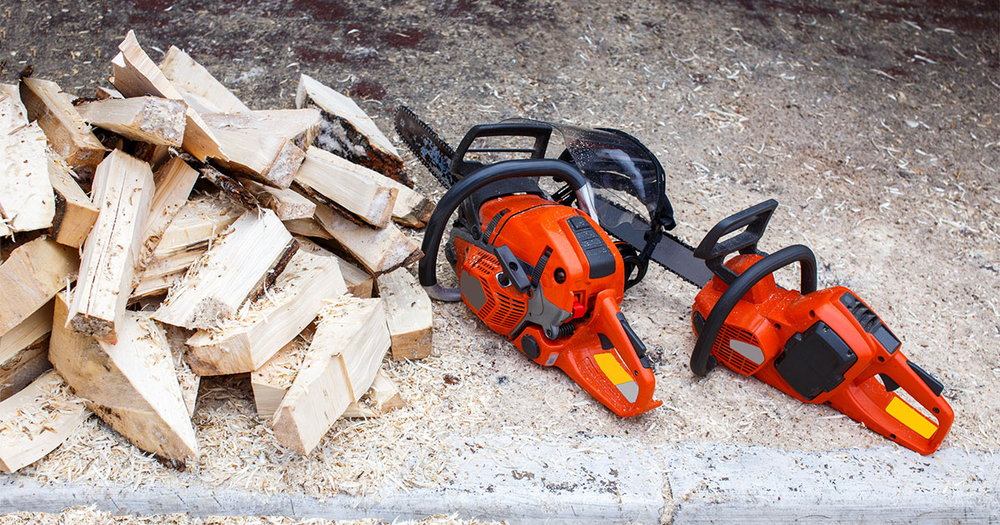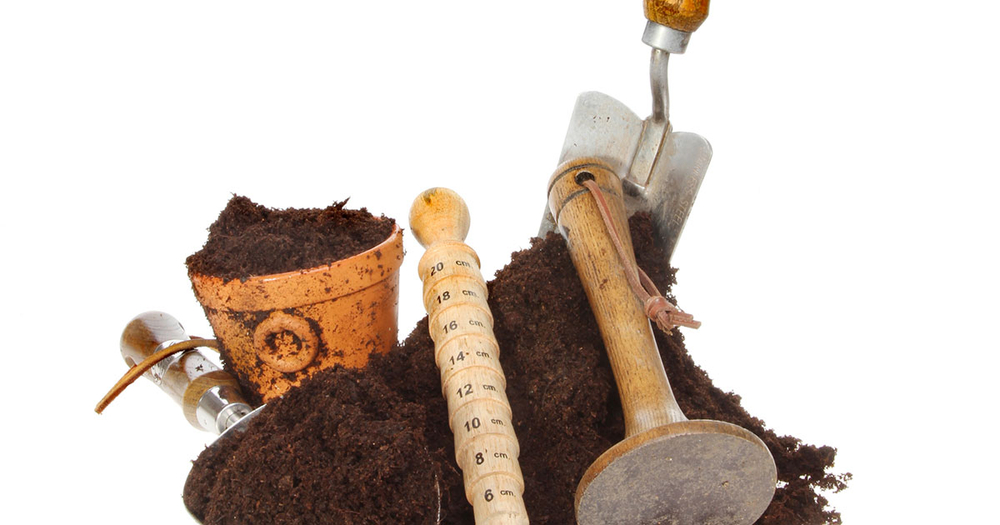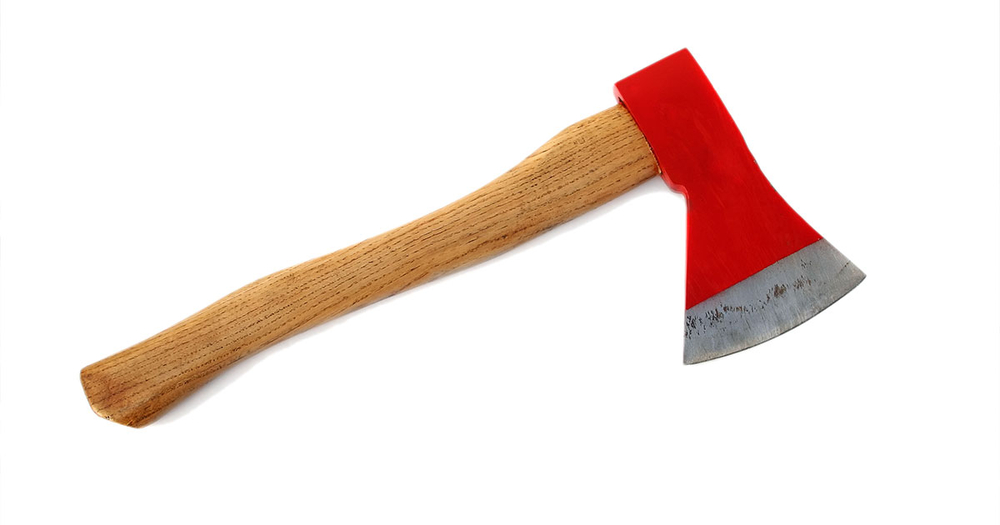
Forestry is a labor-intensive job. Foresters work with large trees that are spread across a wide geographic region of rugged terrain.
However, this should not strike fear into those working in forestry operations. A number of common hand tools have been created to help foresters navigate this environment and perform their job.
Most forestry tools have been used for hundreds of years. Over time, technological advancements have allowed them to develop and become higher quality. With the right tools at your disposal, you can come to a forestry setup for success
The tools listed below are some of the most integral equipment to a forester’s toolkit. While not exhaustive, this offers a great start to being equipped to handle many of the basic forestry tasks.
An ax is arguably the most important hand tool for a forester. Depending on the axe, it can be used for tree felling, trimming, splitting wood, and grubbing purposes.
Axes with wooden handles are generally best. Hickory and ash handles are considered the highest quality of wooden handles. Rubber and composite handled axes are useful, but they cannot be replaced and they are less ergonomic than a wooden handle.
Axes come in different weights and sizes. Heavier axes tend to cut deeper and maybe more effective for larger trees. That said, lighter axes are easier to operate and cut with accuracy. For beginners in forestry, lighter axes are the best place to start.
Hand saws are not used as much as they once were due to the rise in power chainsaws. That said, they can still be a useful tool for cutting wood. There are various types of handsaws that have different sizes, weights, and sharpness of the blade. Depending on the type of handsaw, it may be best suited for various types of wood.
Crosscut saws are two-handed in forestry and used for felling and conversion to logs.
Bow saws are operated by a single hand. They are used to cut small trees, branches, and poles. They get their name due to their shape, which resembles a small archery bow.
Pruning saws are used to prune branches. They operate efficiently because they are easy to use.
The power chainsaw is one of the greatest innovations in forestry. This portable power tool features a blade attached to a rotating chain. It is powered by gasoline or electricity to cut through wood.
Power chainsaws are used for many things, including felling, delimbing, bucking, salvage cutting, and pruning. Some of the factors to consider in a power chainsaw include engine power, fuel consumption, weight, and size. Make sure to research the details of the power chainsaw before purchase.
There are several measuring tools that are easy to use and come in handy, such as diameter tape, logger tape, compass, and GPS.
Diameter tape is used to measure a tree’s diameter, usually at breast height. Diameter tape is unique because it has regular length measurements on one side and diameter conversions on the other. The Lufkin Artisan Diameter Tree Tape features a rugged, vinyl covered steel case and a special claw hook designed for anchoring in tree bark at $129.60 per tape roll.
The Spencer Logging Diameter AutoRewind Tape is 75 ft long and costs just $60.00. It features automatic rewind, an aluminum case, and an active bumper to cushion the blade tip.
Foresters use GPS systems for many tasks, but most often to mark the location of features in a forest plot. GPS systems allow you to make a point at a location of interest so that you can revisit that spot later on.
You can consider buying a GPS system or downloading a phone app such as Avenza. Visit the Southern Regional Extension Forestry website for more examples of apps. For the most accuracy, cheap apps may not always be reliable. In cases where precision is vital, licensed surveyors using high-quality GPS systems are your best bet.
A handheld compass measures direction in degrees. Compasses are used to establish plots and determine property lines. A handheld compass is sufficient for most forestry purposes and its compact frame makes it easy to carry. In order to get the most accurate readings, hold the compass level while using.
Compasses such as the Brunton TruArc 3 are reliable and trusted for just $19.95 per compass. Other compasses offer more to extend their abilities. The SILVA Ranger 2.0 Quad Compass, at $49.49 per compass, features a mirror, slope card, and distance lanyard.
The Brunton Omni-Sight Sighting Compass features special aluminum housing to ensure ruggedness and a rare earth magnet that ensures exceptional accuracy, all for $169.95. Finally, the GEO Pocket Transit is most notable for its hinge inclinometer that reduces the number of measurements required in the field by allowing for simultaneous trend and plunge measurements. This high-quality tool costs $719.95.
Tree borers allow foresters to extract core samples from trees using a hollow tube and a metal core extractor. The increment borer extracts a small straw-shaped sample (generally 0.2 inches in diameter) that runs from the bark to the center of the tree. By examining the tree rings, the forester can determine the age, growth rate, and soundness of the tree.
The length of the core extractor varies in two-inch increments. They range from an 8-inch minimum to a much larger sampling depth.
A clinometer is a specialized tool used to measure vertical angles, such as ground slope, road grade, or tree height. This handheld instrument comes in many models. The best models have degree and percent scales.
Suunto Clinometers are used to measure tree heights, vertical angles, and slopes all over the world by foresters, surveyors, engineers, cartographers, and more and can be purchased for $231.
The Brunton Omni-Slope Sighting Clinometeris just $169.95. This product offers fast and accurate readings, whether you are measuring the height of a tree, avalanche danger, or judging the pitch of a cave.
Another aspect of forestry is planting trees. Proper plantation tools can make this process much easier.
measurin

Dibble
Dibble sticks that are used to make a hole in the ground where seeds or young plants will be inserted into the soil. Traditional dibbles are wooden, but more modern dibbles can be found in steel or plastic.
Dibbles with longer handles allow you to make a hole while still standing. Dibbles come in different types of shapes and sizes. The shape and thickness should be selected based on the desired hole in the soil.
Planting shovels look like normal shovels, However, they have a special sharp edge that is designed to pierce the soil more easily.
A hoedad is a plantation tool most useful in mountainous regions with steep slopes. An angle at the end of the handle allows the planter to swing the tool at an angle on the sloped ground.

Several other tips can help make sure you get the best use of your hand tools. Following these tips will not only keep you safe, but also keep tools working more effectively.
Always read the instruction manual. The manual will walk you through how to use your tool in the safest manner possible. Particularly for tools with sharp blades, using the tool properly is important to avoid injuries.
Second, inspect your tools regularly for deformities. Some tools require regular maintenance. This maintenance helps to catch parts that need to be replaced and prevents the tool from malfunctioning.
Both the tools and the forestry operations can make forestry a dangerous job. The right Personal Protective Equipment (PPE) can be the difference between life and death.
Chainsaw pants help keep your limbs safe while working with chainsaws. In case the chainsaw or another tool is dropped, the pants will help protect the legs from any sharp blades. Furthermore, pants protect the legs from splinters that shoot out of the machine.
Safety helmets are important to protect your head. In case of falling objects or tools, the safety helmet will break the impact. They should have a proper fitting with earmuffs and visors.
Other important PPE includes safety boots, goggles, and noise protection equipment such as earplugs or earmuffs.
Hand tools are commonly used to complete basic tasks of forestry, including cutting, measuring, and planting trees. While there are many large tools, hand tools are easier to use and carry around.
It is important to take the proper precautions while using hand tools. Workers should be equipped with proper clothing apparel, instructions, and tool maintenance for best results and optimal safety.